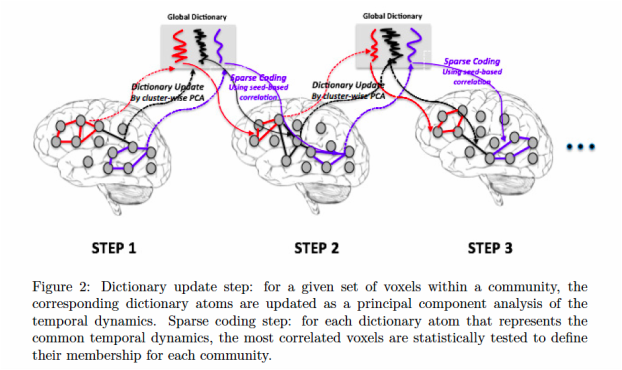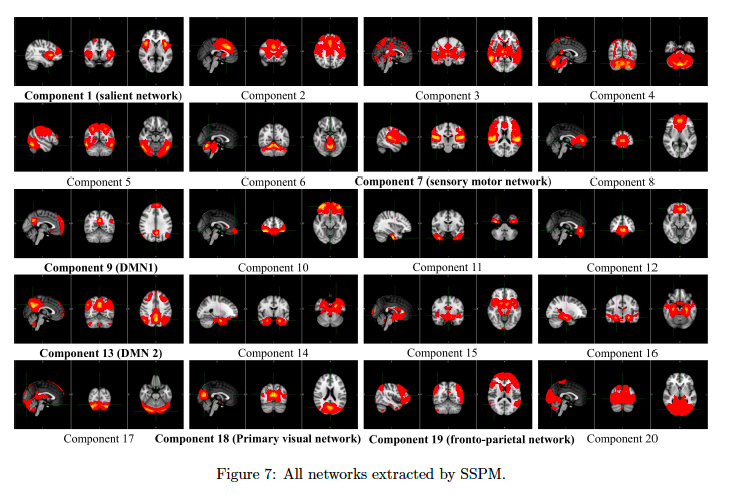Sparse SPM: Group Sparse-dictionary learning in SPM framework for resting-state functional connectivity MRI analysis
Lee et al, NeuroImage , 2015 Oct 31. pii: S1053-8119(15)01012-5. doi: 10.1016/j.neuroimage.2015.10.081.
Recent studies of functional connectivity MR imaging have revealed that the default-mode network activity is disrupted in diseases such as Alzheimer's disease (AD). However, there is not yet a consensus on the preferred method for resting-state analysis. Because the brain is reported to have complex interconnected networks according to graph theoretical analysis, the independency assumption, as in the popular independent component analysis (ICA) approach, often does not hold. Here, rather than using the independency assumption, we present a new statistical parameter mapping (SPM)-type analysis method based on a sparse graph model where temporal dynamics at each voxel position are described as a sparse combination of global brain dynamics. In particular, a new concept of a spatially adaptive design matrix has been proposed to represent local connectivity that shares the same temporal dynamics. If we further assume that local network structures within a group are similar, the estimation problem of global and local dynamics can be solved using sparse dictionary learning for the concatenated temporal data across subjects. Moreover, under the homoscedasticity variance assumption across subjects and groups that is often used in SPM analysis, the aforementioned individual and group analyses using sparse dictionary learning can be accurately modeled by a mixed-eect model, which also facilitates a standard SPM-type group-level inference using summary statistics. Using an extensive resting fMRI data set obtained from normal, mild cognitive impairment (MCI), and Alzheimer's disease patient groups, we demonstrated that the changes in the default mode network extracted by the proposed method are more closely correlated with the progression of Alzheimer's disease.


